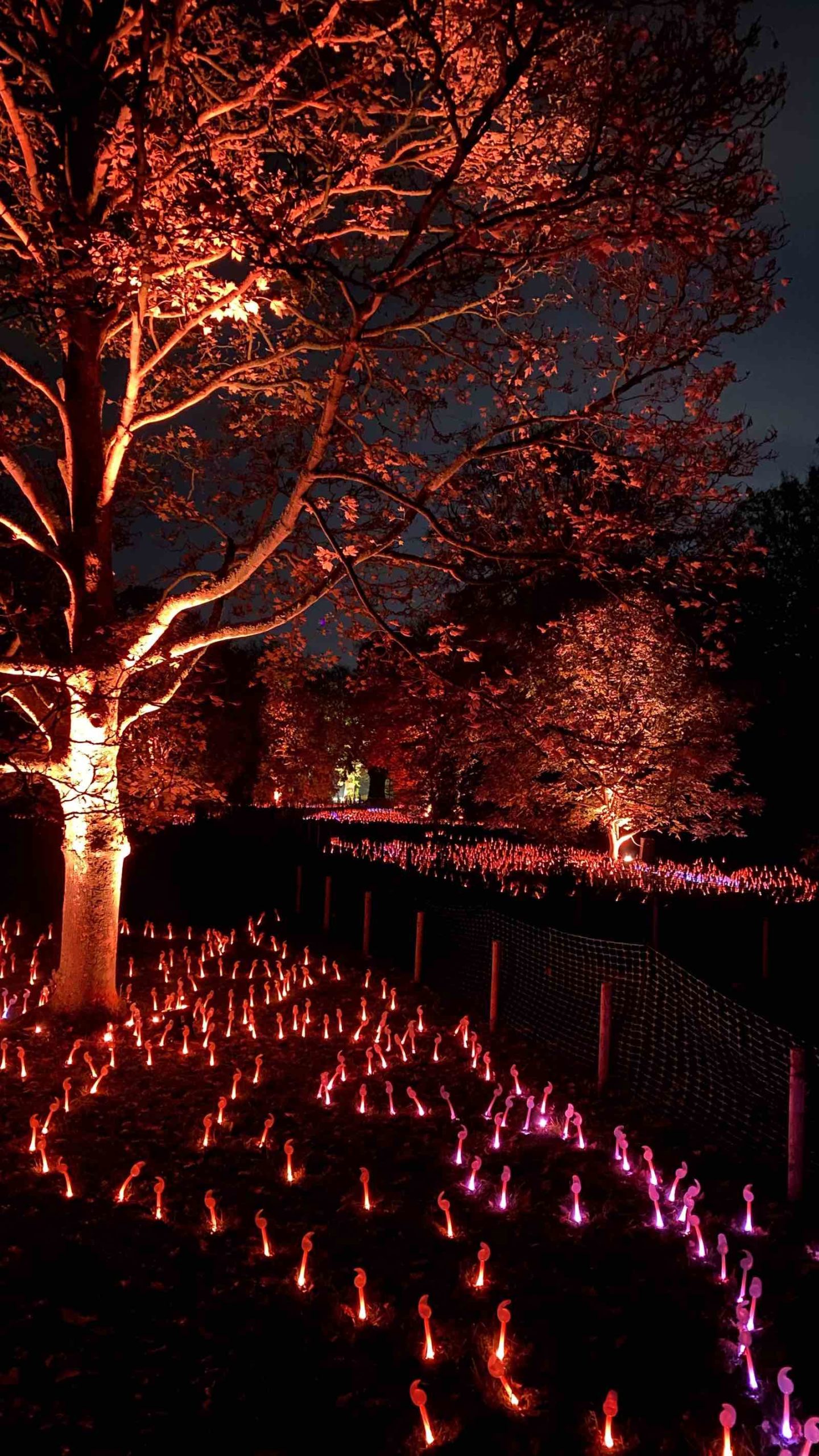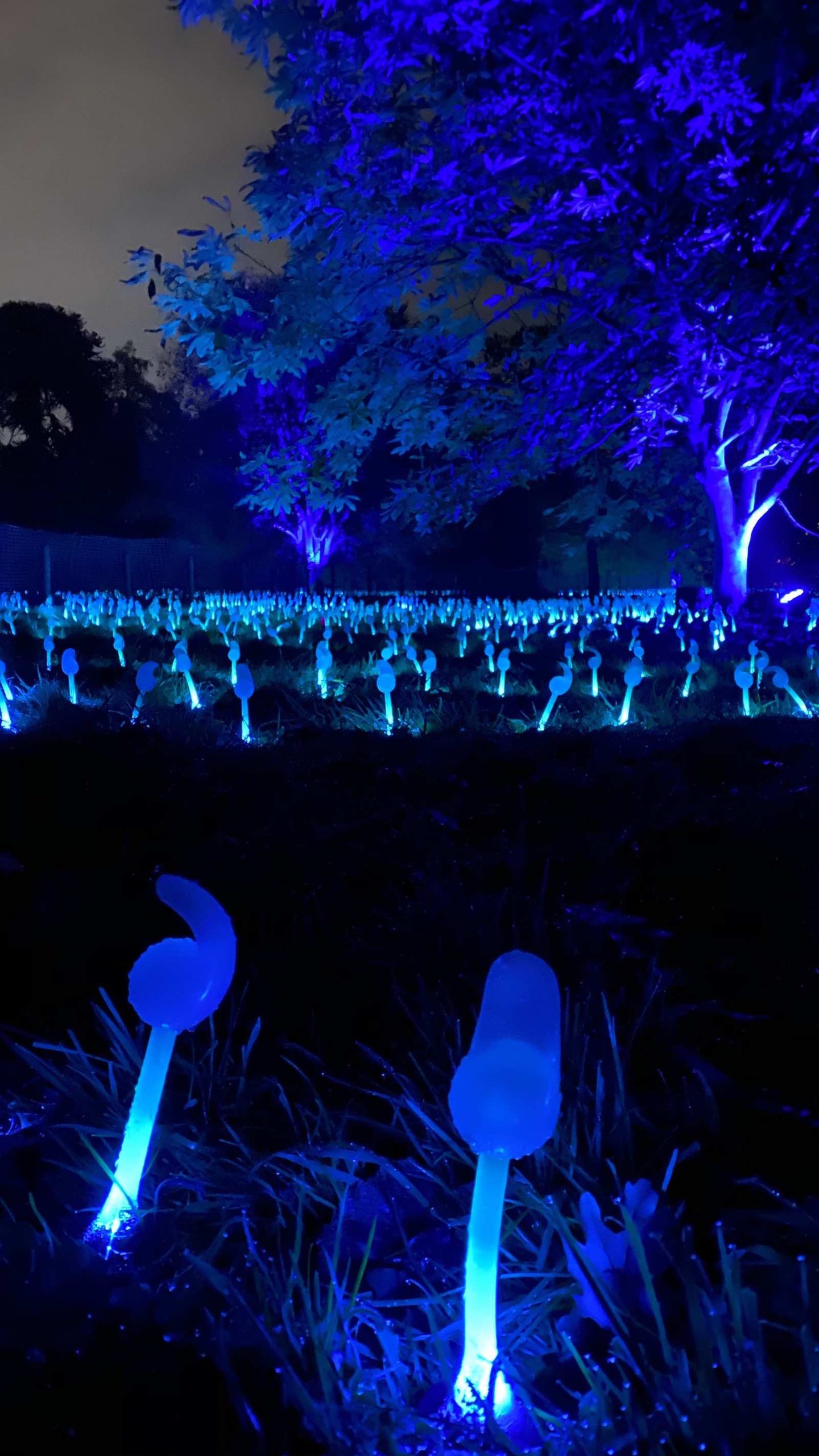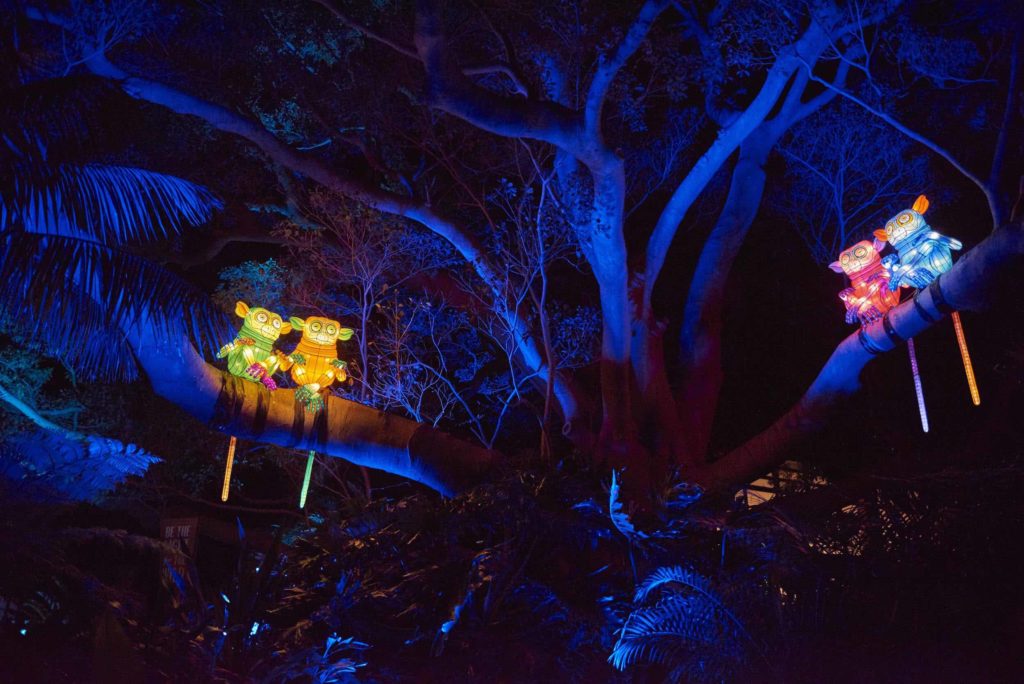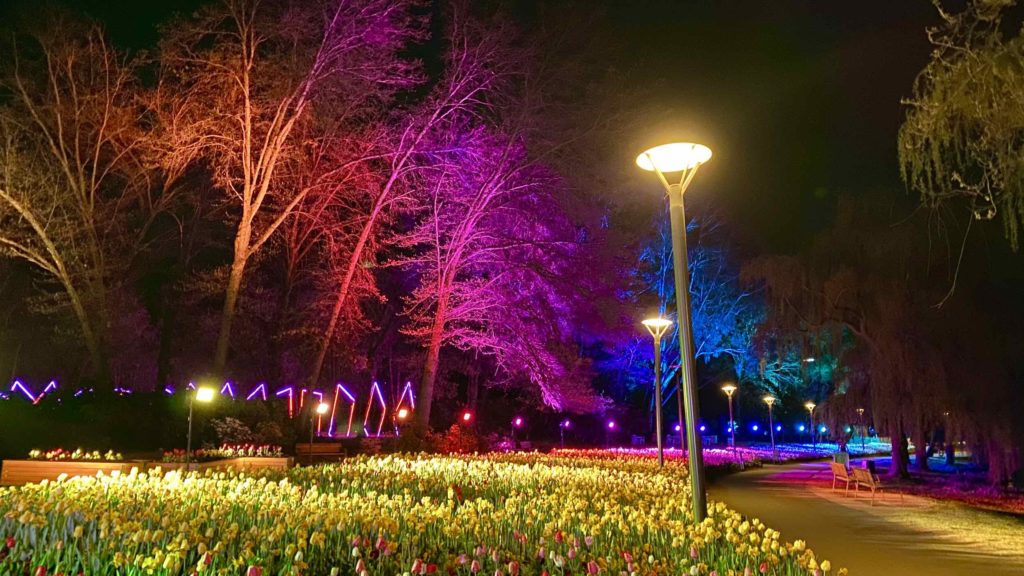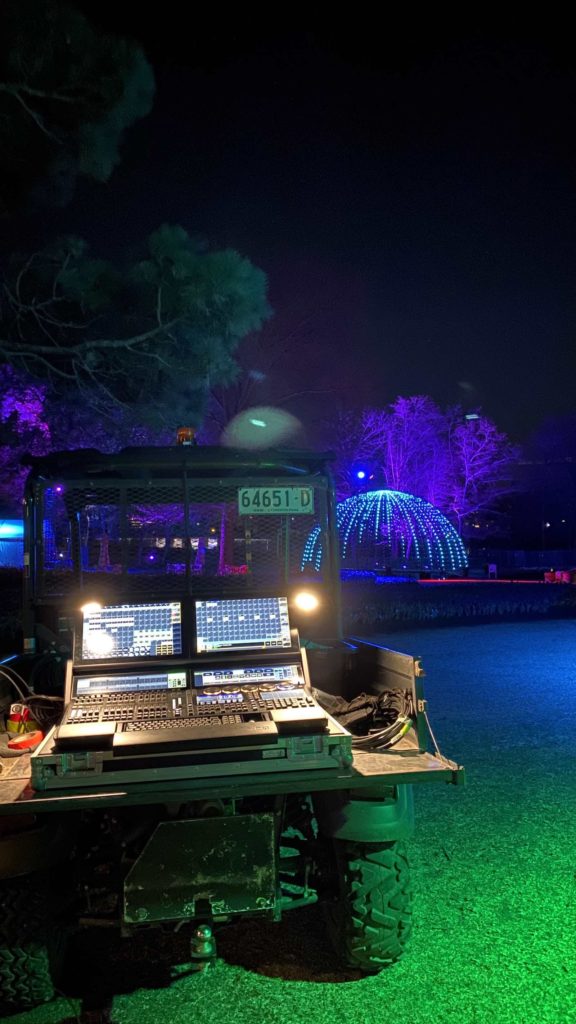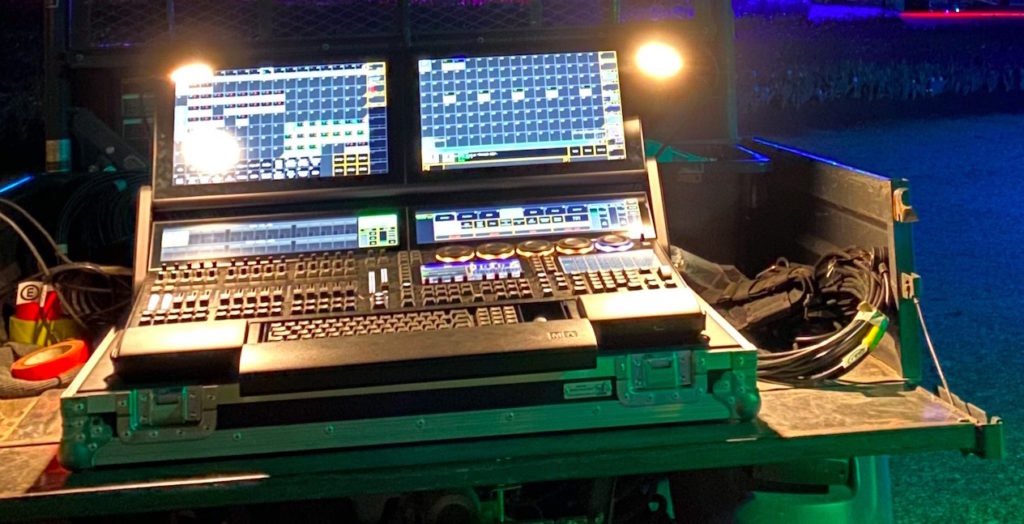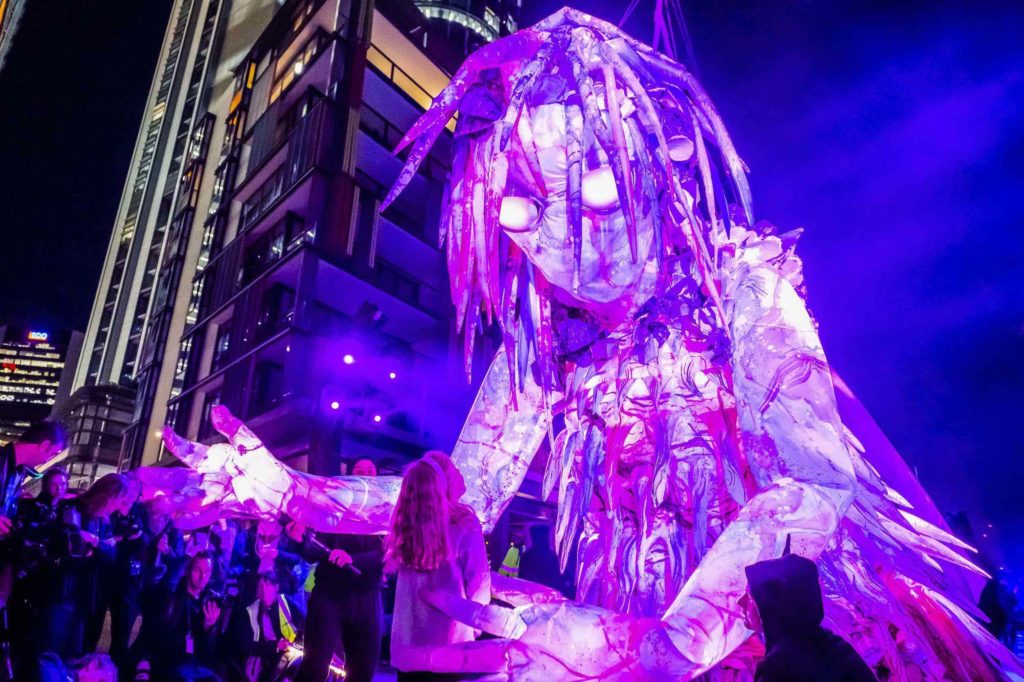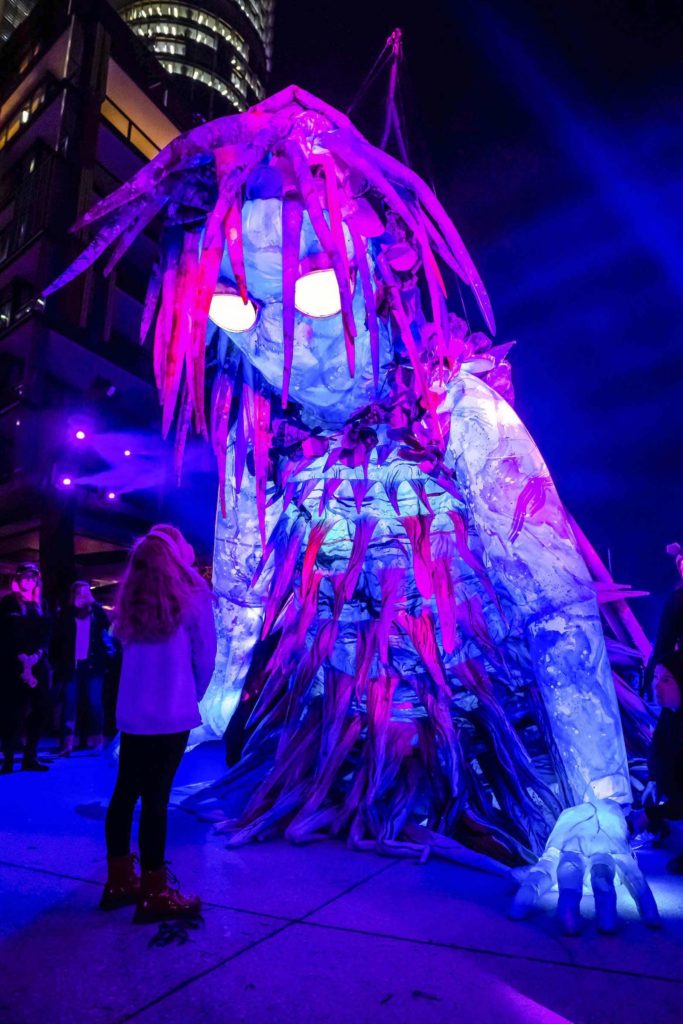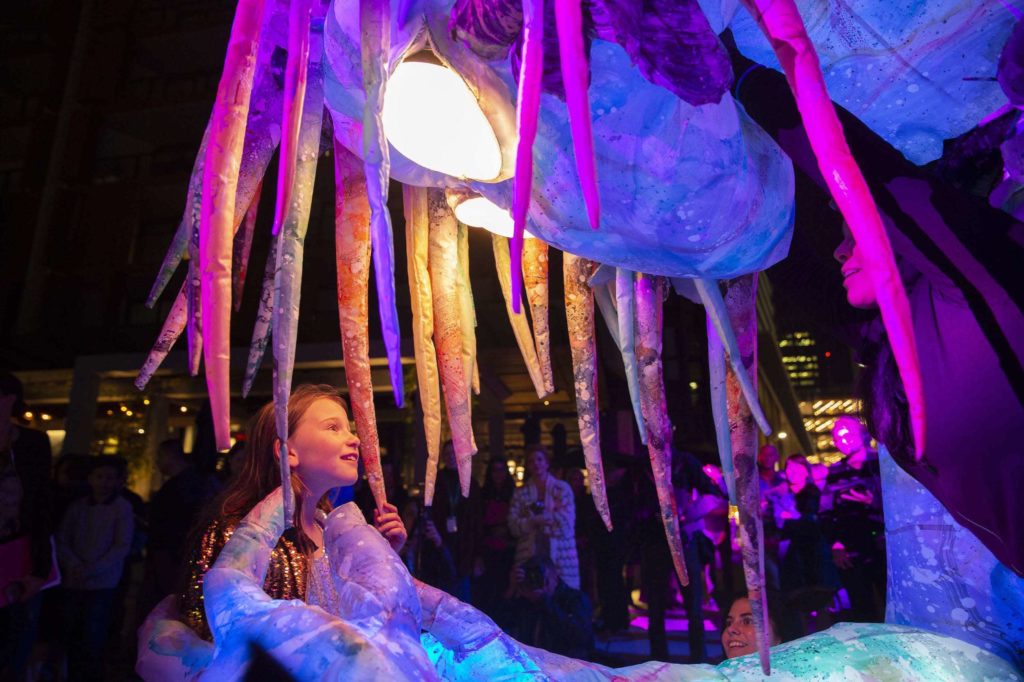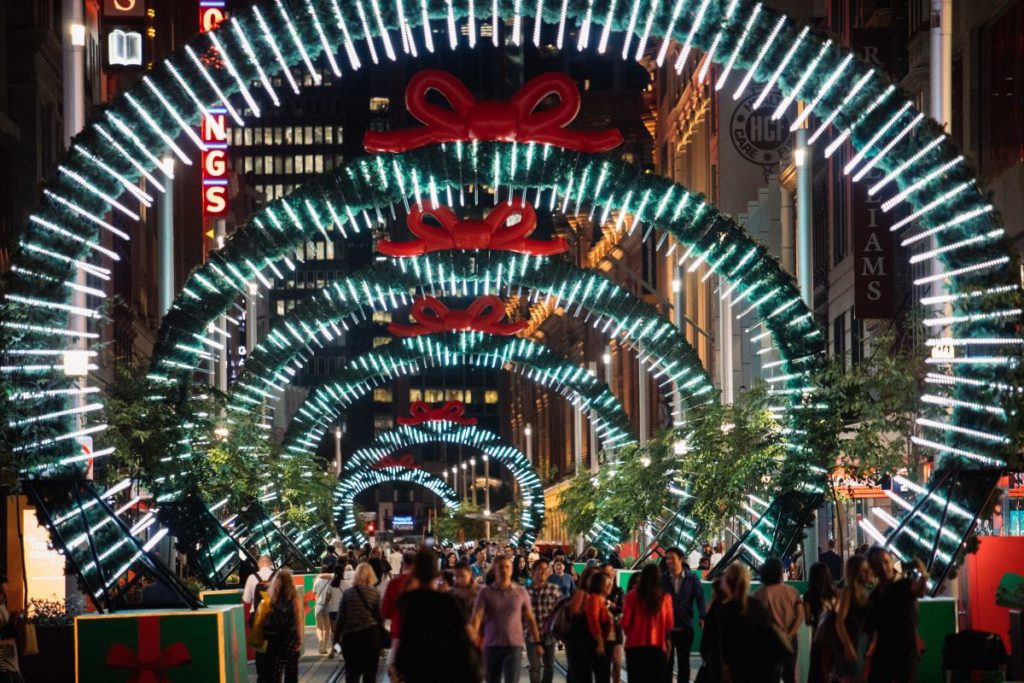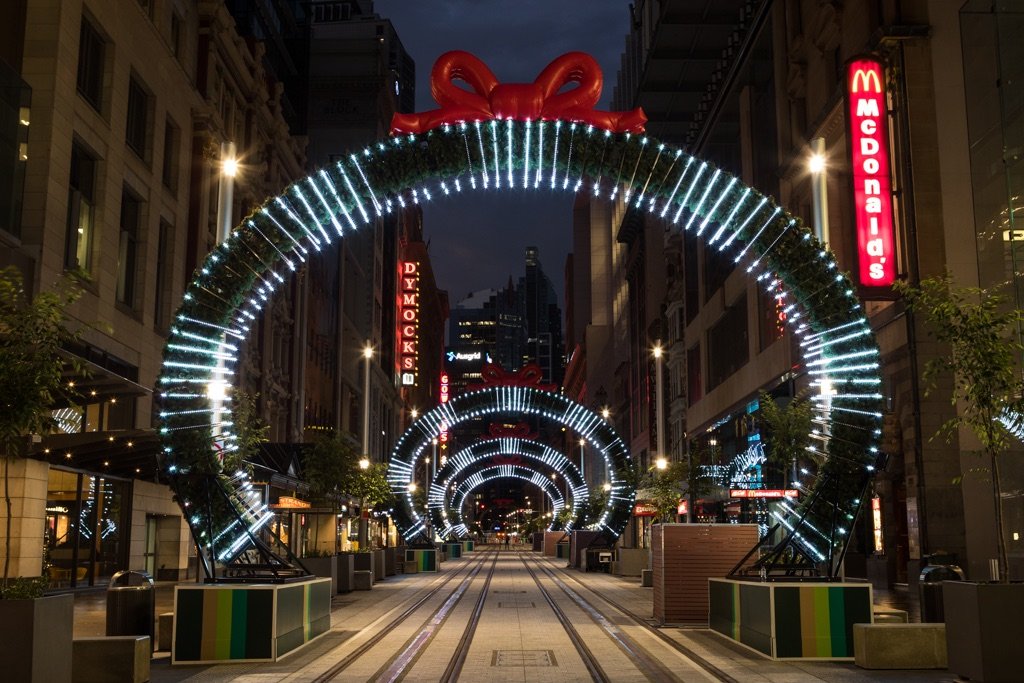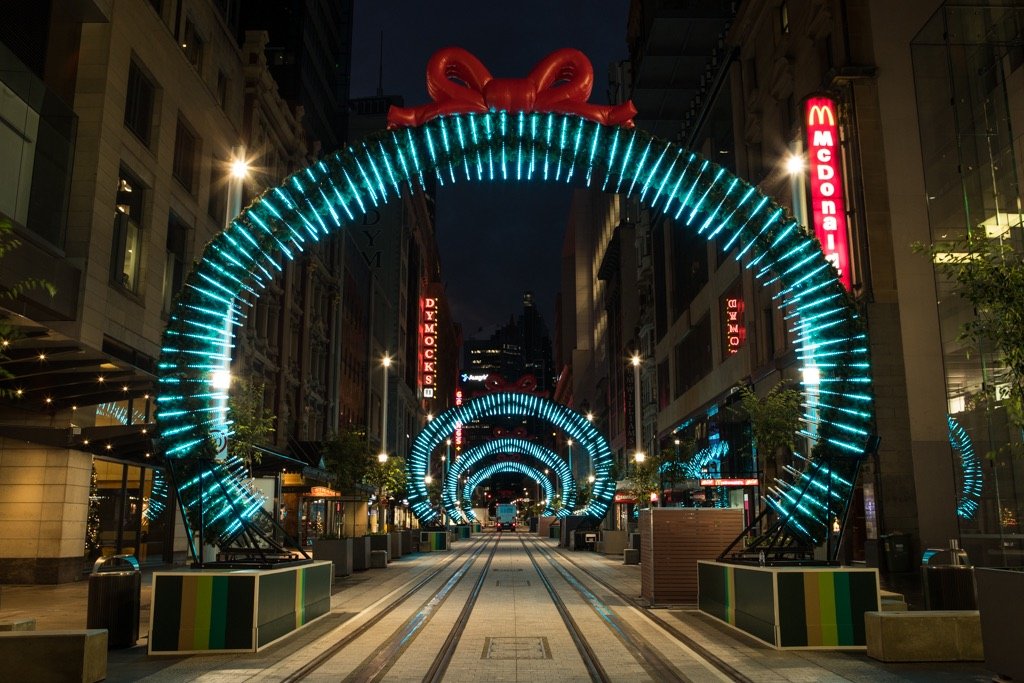Lighting
7 Dec 2020
Lighting The Unconventional
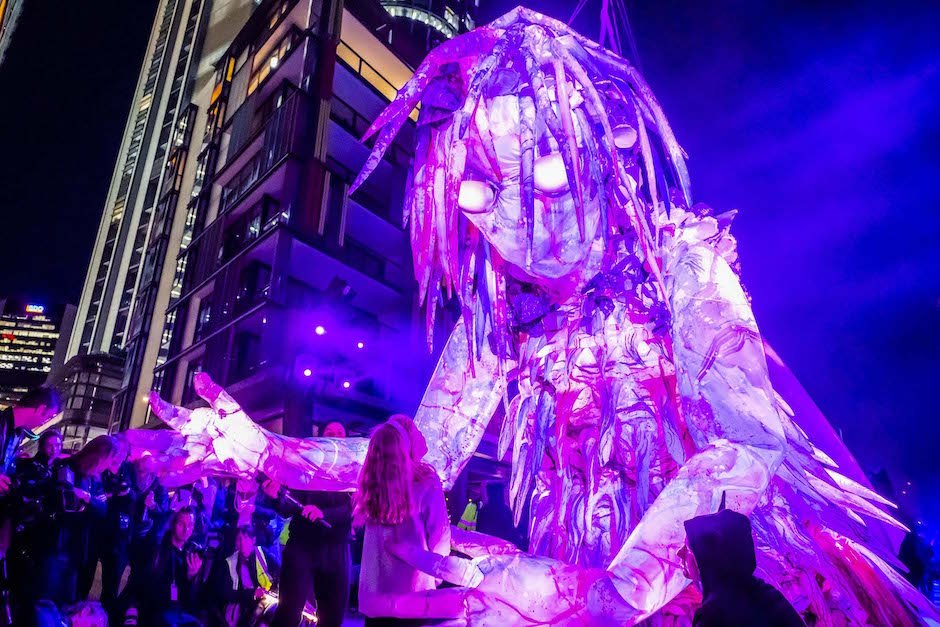
Subscribe to CX E-News
Mandylights’ Richard Neville
Jason Allen spoke with Mandylights’ Managing Director Richard Neville about not just surviving but thriving in 2020, their extensive light art and site-specific portfolio, and tips and tricks for working on large scale outdoor events…
When I spoke to Richard, Mandylights had 16 light art works loading in around the UK, and had spent 2020 delivering stunning, unique events including the Parrtjima Festival of Light in the NT. [See News in the Current edition of CX Magazine]
Clearly COVID had affected, but not stopped, Mandylights’ work. How did the company continue on when so much else had gone dark?
“We’re very diverse in what we light,” states Richard. “Even in my early career, I was jumping between theatre, corporate, and building projects. All of our team have this diversity of experience, and that’s really helped us over the last months; we don’t just do concert or broadcast.
“Architectural and light art projects have just kept going – we’re still sitting at consoles programming things, but it’s 100,000 pixels on a bridge instead of a stage. It’s part of our ethos that we’re open to anything.”
Large-scale public festivals of illumination are now spread around the globe. “Light art is a massive part of experiences and festivals globally,” agrees Richard.
“We’ve been working in a dozen countries even through the pandemic. People want and crave meaningful visual experiences.
“For example, we work on Christmas illuminations at Kew Gardens in London. There are dozens of artworks, and a million people come through. They walk through, touching and interacting with the works.
“I get as much satisfaction designing something that goes into a park as I do a world concert tour. You’re working for the same size audience, with the same technology, but you get to use it in such an unconstrained manner; instead of a focus on a stage with artists, you’re lighting in a pitch-black area with complete free rein to control the experience.”
Working on such unconventional projects means Mandylights usually have to create technological solutions where none existed previously. “We approach everything from a design point of view,” Richard explains.
“Our approach is that if a client wants something, they place creative trust in us to execute that brief – it’s up to us to dictate how we create the experience. We then work with suppliers to develop novel fixtures and control solutions.
I get as much satisfaction designing something that goes into a park as I do a world concert tour
“We actively seek products to fit the creative brief, as opposed to using existing stocks of the same old moving lights. When we create new, innovative ways to do things on novel projects, the results flow into our concert and entertainment work.”
With Mandylights often working on large sites to implement unique experiences, I asked Richard to share his thoughts on which technical problems regularly present as the most challenging.
Talking on a case-by-case basis, he used real-world examples of Mandylights’ work to illustrate the issues that most often crop up, and how he and the team handle them.
Taronga Zoo, Floriade, and Sydney’s CBD – Data and Power Distribution
“We were brought in to create an immersive, site-wide lighting design to support light art installations at Taronga Zoo. One of the big design challenges we frequently face when we light sites that are two or three square kilometres in size are issues with data and power.
“You’re taking a similar creative approach as you would in theatre, but everything just blows out with the scale; it can take you 45 minutes to walk back to the shed just to get some more electrical tape!”
“As we’re placing lights in the design, we’re thinking ‘How is this going to be powered and how do we get data to it?’ It’s a coordinated site and installation, where lights need to be changing in sync with each other – how important is data speed and refresh rate? Is it tied in with audio, and if so, how do we coordinate with audio’s delays?”
“Data distribution is always difficult. You can go wireless, but that’s always affected by other traffic. You can use fiber, but that’s not without issues and costs.
“Five years ago, we had a tree fall down in the middle of Canberra’s Floriade festival and it took down the main fiber run, which shut down the back-end of the whole site.
“Data is also hard to standardise – how many universes do you need, how big is the site? Data is a constant variable.
“We have tried to standardise our approach; we’ve invested in about 1000 universes of sACN distribution units that are housed in little weatherproof boxes, so we can have power and data in nodes all over the site, with options for wired and wireless, including 4G.
“It’s taken us years to get that right.”
“Another issue is that you can never really simulate network load and strain until you fill your site full of people. We once worked on a Christmas illumination in Sydney’s George Street for Transport NSW, and we used wireless DMX to run control down the street.
“The network performance was great on the first night after we loaded in, but on the first rehearsal day, data performance went through the floor because the street was full of people with phones and all the building’s Wi-Fi networks were active – we had to do a huge rethink.”
Barangaroo – Weather
“We’ve worked the Barangaroo precinct for three years for Vivid, and run other activations in between.
“For Vivid, we collaborated with puppetry company Erth on an open brief to create an experience. Our part of the work included an immersive lighting and audio system to run down Wulugul Walk, the main promenade at Barangaroo South.
“The piece ran for 200 metres – there’s water on one side, and expensive apartments and restaurants on the other. It’s a difficult site; there’s one group that owns it, another company that manages it, and Transport for NSW manages the wharf for ferries – there’s a lot of stakeholders.
“We needed to design an outdoor lighting, rigging and audio system that would keep everyone happy and last over four weeks in winter, outside.”
“After some research, we determined we could create our own moving head fixtures and get all of the functionality we wanted without having to resort to hiring standard fixtures and spending thousands on outdoor domes.
“This has all been part of developing our own supply lines. I spend about a month each year in Asia looking at new fixtures and building relationships with manufacturers.
“This way, if we want a fixture with wider zoom, particular gobos, or the animation, prism, or colour wheels we want, we can get it made. It’s not always cheaper than buying something off-the-shelf, but for us, if it doesn’t exist, we like to go and make it.
“Over the years, we’ve created around 50 fixture types that range from LED floods to tape and pixel products. We’ve taken the same approach with control, and ultimately it creates infinitely more freedom for us as designers.”
Investing in Vision
Pitching bespoke projects to festivals with international reputations requires convincing simulations and visualisation. Traditional lighting pre-vis software just doesn’t have the scope that Mandylights needs, so, true to form, they’ve sought out an alternative and participated in its development.
“What we’ve found is that there shouldn’t be just ‘lighting pre vis’ anymore,” offers Richard.
“Lighting pre-vis is fine for a concert arena or theatre, but if we’re working on a project that has a three square kilometre site, or if I want to visualise an entire city, I don’t want wireframes or grey blocks, I want photorealistic textures.
“Lighting pre-vis software is always playing catch-up to the design industry.”
Mandylights’ requirements have brought them to a software called Depence, by Syncronorm. “We’ve been involved closely with its development for a couple of years now,” confides Richard.
“It can simulate complete outdoor environments, with the angle of light from the sun adjusted accurately for longitude, latitude, and time of day.
“You can simulate an entire city – I’m currently working on a model of the entire Sydney CBD where we can control the height of the waves on the harbour.
“Tools like this are critical for competition at the pitch stage. And you need this level of simulation not just to show to clients, but also for your own work, as we often don’t get as much time on site as we used to.
“We want to be doing as much of our work as possible using these tools, which can import drone scans, GPS and LIDAR data, imagery from Google Earth, or models that are available at marketplaces like 3D Warehouse.
“Depence and products like it enable us to model lighting on a huge scale.”
Mandylights
mandylights.com
CX Magazine – December 2020
LIGHTING | AUDIO | VIDEO | STAGING | INTEGRATION
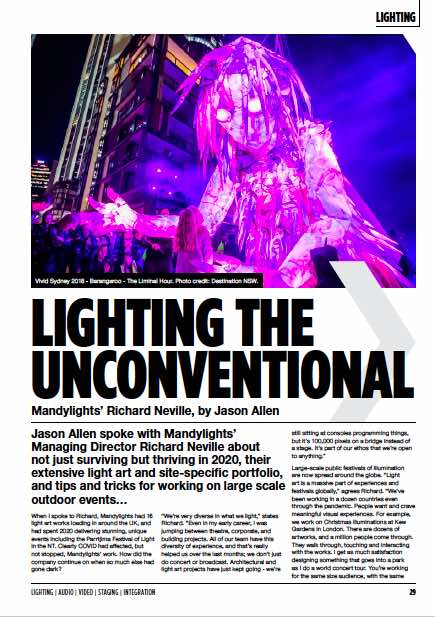
Entertainment technology news and issues for Australia and New Zealand
– in print and free online www.cxnetwork.com.au
© VCS Creative Publishing
Subscribe
Published monthly since 1991, our famous AV industry magazine is free for download or pay for print. Subscribers also receive CX News, our free weekly email with the latest industry news and jobs.

